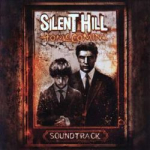Silent Hill Homecoming Soundtrack
 |
Album Title: Silent Hill Homecoming Soundtrack (US) |
| Record Label: Konami of America |
|
| Catalog No.: N/A |
|
| Release Date: November 24, 2008 |
|
| Purchase: Buy Used Copy |
Overview
Silent Hill: Homecoming was the first game in the series on the Playstation 3 and Xbox 360, bringing the series into the next generation. Like Silent Hill Origins, the title was developed by an external company instead of Konami’s internal team. This time, the developer was California-based Double Helix Games. The story focused on Alex Shepherd, a soldier returning to his hometown, Shepherd’s Glen (neighboring Silent Hill) and searching for his brother. Events involving Silent Hill’s resident cult eventually draw Alex towards the infamous town. Reviews of the game were mixed to positive, but its graphic violence was censored in its European and Australian releases, and it was never released at all in Japan. Akira Yamaoka returned once again with Mary Elizabeth McGlynn to create the soundtrack. A promotional disc was given out to some who purchased the game, but there was no commercial release of the score until the Silent Hill Sounds Box.
Body
The lack of rock influence throughout the soundtrack is quite noticable, being confined merely to two of the songs. The opening, “One More Soul to the Call”, pays homage to the opening of the first game with a slinking chromatic guitar line in its pre-chorus, but this and its striking opening on irregularly grouped arpeggios in the lead guitar are its most interesting features. Its simplicity lends it a certain power, though. Slower rocker “This Sacred Line” is backed by a hammond organ. The song’s metal riffs and dull melody are not up to the series’ usual standard.
Very few pieces in the Silent Hill series can be called character themes. The series as a whole has tended to focus on its protagonists’ interactions with the town to a far greater degree than those with other characters. Even Silent Hill 2‘s “Theme of Laura” is not descriptive of the character named Laura as of the game as a whole, as Yamaoka has stated. The Homecoming soundtrack, however, has “Elle Theme” and “Alex Theme”. These two songs, sung by McGlynn once again, are descriptive of their respective characters, both in their lyrics and their music. The former is a trip-hop influenced song opening with a compressed, clanging piano chord, repeated over and over. The lyrics are sung from the perspective of the character, and as the music builds, adding synth pads and strings, her thoughts begin to overlap as McGlynn sings two simultaneous parts with different lyrics. After the climax, the one simply echoes the other. The song comes to a close on a harsh piano chord.
“Alex Theme”, which closes the disc, is also sung from the perspective of its title character. The version on the promo disc has a sparser arrangement than the “Machine Head Mix” version on the Silent Hill Sounds Box. The latter emphasizes its electronic bass line, pulsating loudly thoughout, and adds a wailing theremin-esque synth line. Both versions share the same lyrics and melody. McGlynn’s repeated insistence on a set of only vaguely connected ideas in the chorus — The madness/The Sadness/ Can this be/Or is it — represents the character’s obsession. The repeated melodic motif from the chorus also appears in “Cold Blood” in instrumental form, played by synth pads and piano.
The rest of the score tends towards the ambient, to a degree far higher than its predecessors (aside from the first game). The soundscape is generally harsh, even by the standards set by previous Silent Hill scores. The distant drumming and sputtering in “4 Pattern” is not accompanied by anything much resembling a tone, and the unsettling shifts and intrusions throughout “Living in Fear” are more rhythmic than musical. A distorted radio dominates “Regards”, along with an eerie laugh that also appears in “The Thing”.
“Witchcraft”, on the other hand, is more akin to material from Silent Hill 3 or 4. It builds slowly out of repeated synth chords, beginning with piano before adding synth pads and a rhythm loop. The piano line in “The Terminal Show” is backed by synth and lo-fi drums, building slowly until it is cut off by an utterly unexpected synth chord. The opening and ending tone of “Snow Flower”, with its refracted sheen, is one of the more striking sounds on the album. A soprano singing over a dragging rhythm and low piano in “Dead Monks” also makes a strong impression. The track comes to a close over a reverberating metallic clang.
Summary
Silent Hill: Homecoming is one of the less accomplished scores in the series. The individual tracks are not without merit, but the overall experience feels unfocused. The version of the soundtrack included in the Silent Hill Sounds Box, with its revised track order, is better than the promo score, but it cannot remedy the basic problems with the material. The songs are weaker than in previous scores, and the two rock songs feel distinctly out of place. The ambient material is not as distinctive as in other scores, although highlights such as “Witchcraft” and “Snow Flower” are on par with Yamaoka’s best. As part of the series’ history, Homecoming‘s score has value, but considered on its own, it is a disappointingly weak album coming from Yamaoka.
Do you agree with the review and score? Let us know in the comments below!
3
Posted on August 1, 2012 by Ben Schweitzer. Last modified on August 1, 2012.














